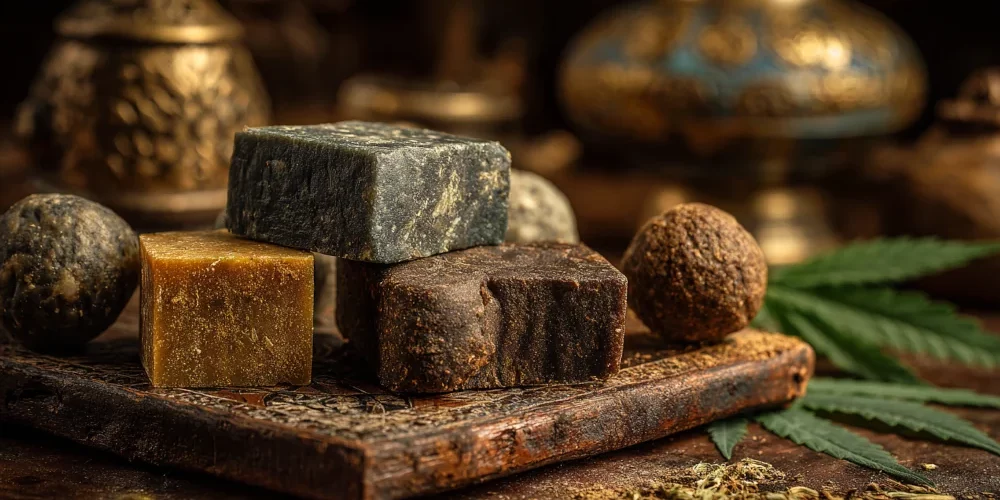Hashish, often simply called hash, stands as one of the most time-honored cannabis concentrates. Crafted from the resin of the cannabis plant, hash is renowned for its potency, rich flavors, and deep cultural roots. Here’s a closer look at what hash is, how it’s made, and the best ways to enjoy it.
What Exactly Is Hash?
Hash is a concentrated cannabis product made by collecting and compressing the resinous trichomes from the plant. Unlike traditional cannabis flower, hash is formed from the sticky, cannabinoid-rich glands that cover the buds and leaves. The final product can range in texture from soft and pliable to hard and brittle, with colors spanning from light blonde to dark brown, depending on the strain, method, and purity. Hash is prized for its high THC content and can be smoked, vaporized, dabbed, or even incorporated into edibles.
Traditional hash production is a solventless process. The trichomes are separated from the plant material by hand, mechanical agitation, or by using ice water and fine mesh screens. Once gathered, these trichomes are pressed together under heat and pressure, forming the familiar blocks or balls of hash.
The Historical Journey of Hashish
The story of hashish stretches back centuries, with its roots believed to lie in the Middle East and North Africa, particularly in regions like Persia. The term “hashish” itself comes from Arabic, meaning “grass.” By the 10th century, hashish was already a staple in these cultures. In India and Nepal, hand-rolled hash known as charas became popular, while in India, hash was also used in the traditional drink bhang. Over time, hashish spread across continents, becoming a cherished part of cannabis culture worldwide.
Varieties of Hash
Hash comes in several distinct forms, each with its own production method and characteristics.
Dry Sift (Moroccan Hash): This classic style is made by sifting dried cannabis flowers over a series of fine screens, collecting the loose trichomes, and then pressing them into blocks or cakes. The result is a product with a crumbly texture and a mellow, earthy flavor.
Bubble Hash: Named for the way it bubbles when heated, bubble hash is produced using ice water to separate trichomes from the plant. The mixture is filtered through mesh bags, and the collected resin is dried and pressed. Bubble hash can range from sticky and oily to dry and crumbly, depending on the process and resin content.
How to Smoke Hash
Because hash is much more concentrated than cannabis flower, it’s wise to start with a small amount, especially for those new to concentrates. There are several popular ways to enjoy hash:
Adding to a Joint: Many enthusiasts like to sprinkle hash into a hand-rolled joint or pack it into a pre-roll for an extra kick. Leaving a bit of space at the tip makes it easy to insert a piece of hash.
Dabbing: For a more intense experience, hash can be dabbed using a rig designed for concentrates. The hash is placed on a heated surface, and the vapor is inhaled, delivering a powerful effect.
Packing a Bowl: Hash can be smoked in a pipe or bong, either on its own or mixed with flower. Because hash can be sticky, glass pipes are often preferred for easy handling and cleaning.
No matter the method, moderation is key. Hash’s potency can be overwhelming for those unaccustomed to concentrates, so starting small and seeking advice from knowledgeable staff is always a good idea.
Common Questions About Hash
Can you eat hash without heating it?
Raw hash won’t produce psychoactive effects because the cannabinoids haven’t been activated through heat. For the desired effects, hash needs to be decarboxylated, either by smoking, vaping, or cooking.
What sets bubble hash apart from traditional hash?
The main difference lies in the extraction method. Traditional hash (like Moroccan hash) is made by dry sifting and pressing, while bubble hash uses ice water and mesh bags to separate the trichomes.
Is it possible to make hash at home?
Homemade hash is achievable using dry sifting or ice water extraction, but it’s important to check local regulations before attempting to make or consume hash.
In regions where hash is legal, dispensaries offer a variety of options, from indica-leaning to sativa-dominant types. Sampling different styles and asking for recommendations can help you discover the hash that best matches your taste and desired effects. Whether you’re drawn to its history or its potency, hashish remains a classic choice for cannabis enthusiasts.







